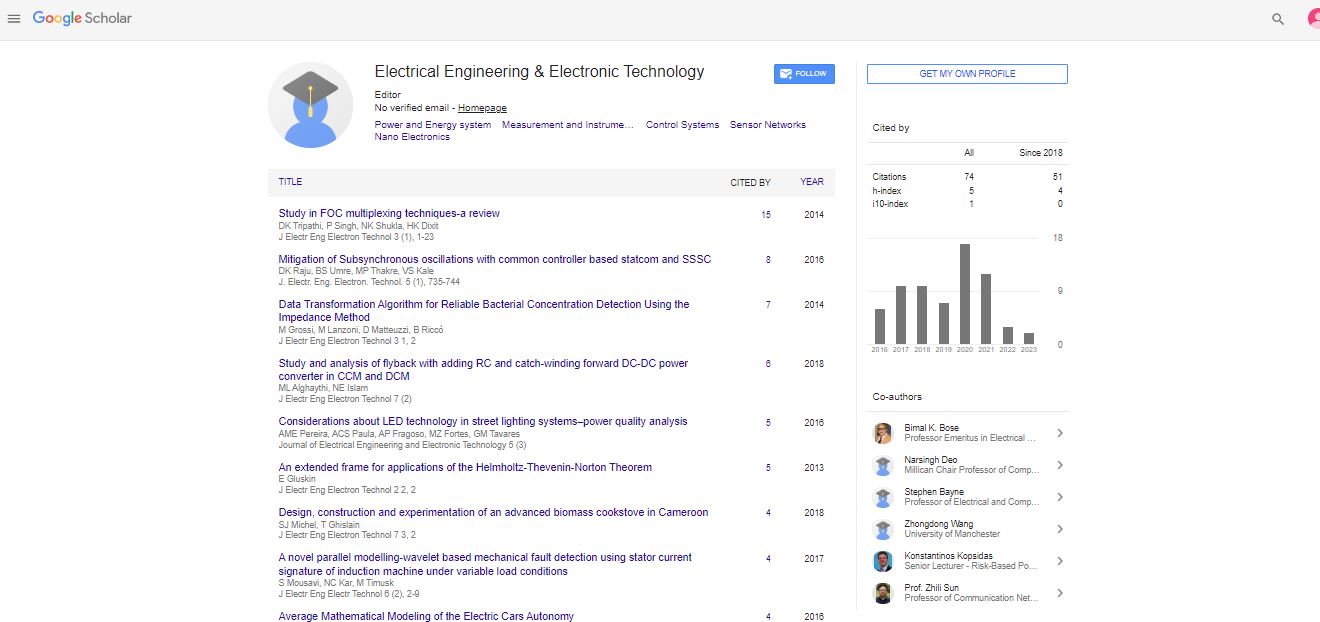Chiral field-matter structures in optics and microwaves
E O Kamenetskii
Ben Gurion University of the Negev, Israel
: J Electr Eng Electron Technol
Abstract
In media with a chiral structure (chiral media), optical activity is a result of the coupling between electric and magnetic polarizations. Chiral metamaterials can dramatically enhance the electric-magnetic coupling through specially arranged metallic structures. Use of metamaterial structures with 3D and 2D chirality allows effective controlling the polarization states of light. Chirality is fundamental to many chemical, biological, and physical processes. Despite the importance of chiral molecules, the experimental determination of enantiometric excess-the fraction of left-versus right-handed molecules-within a mixture of chiral molecules remains a tremendous challenge. Probing material chirality by EM waves, in optics and microwaves, is an important subject. We consider different aspects of the EM field structures (and sources for these fields) for chirality characterization: circular dichroism, optical chirality, superchiral fields, twisted photons, pseudoscalar fields and sources. Realization of twisted evanescent fields for probing chirality in optics and microwaves is a significant problem. In optics, the field chirality on the subwavelength scales can be obtained based on special-form plasmonic structures. Recently, it was shown that with use of small magnonic, one can observe near-field chirality in microwaves. Newly developed capabilities in microwave sensing using magnetoelectric probing fields originated from multiresonance magnetic-dipolar-mode oscillations in quasi-2D yttrium-irongarnet disks provide potential for unprecedented measurements of chemical and biological objects.
Biography
E-mail: kmntsk@bgu.ac.il
 Spanish
Spanish  Chinese
Chinese  Russian
Russian  German
German  French
French  Japanese
Japanese  Portuguese
Portuguese  Hindi
Hindi 
